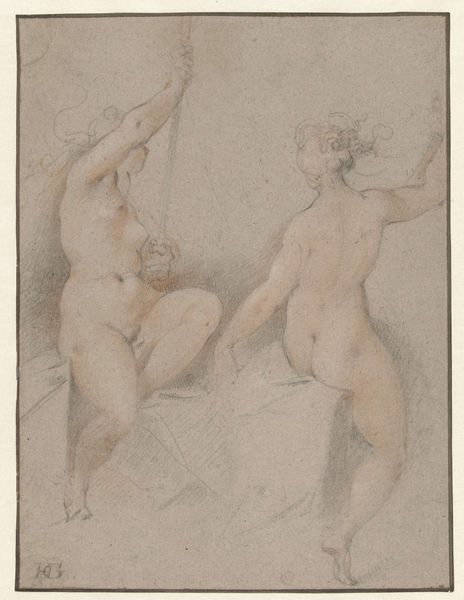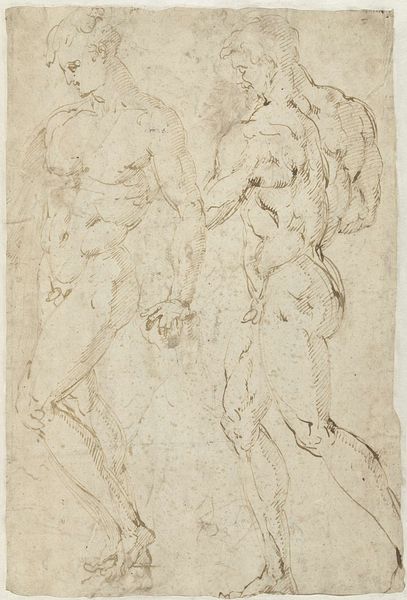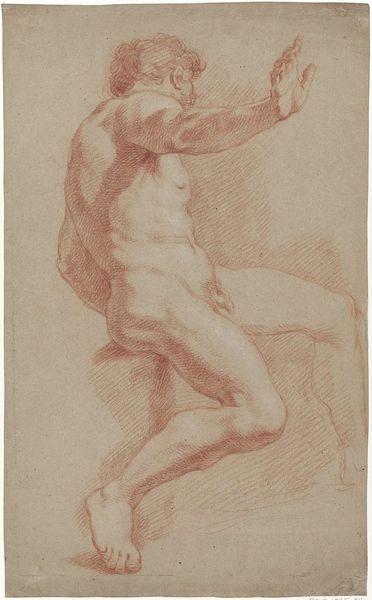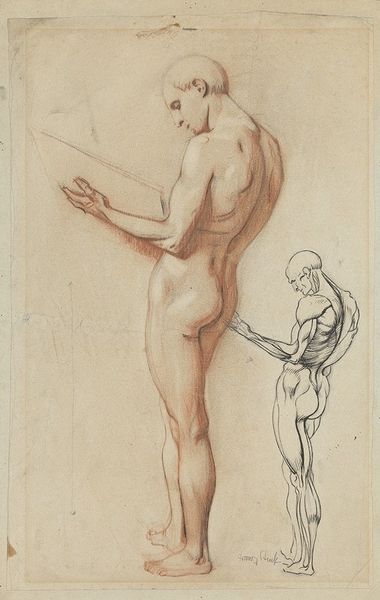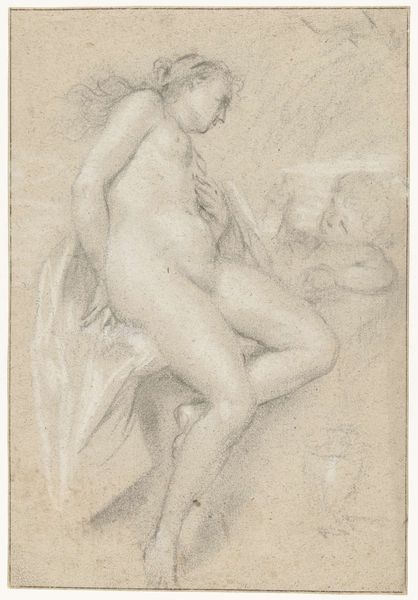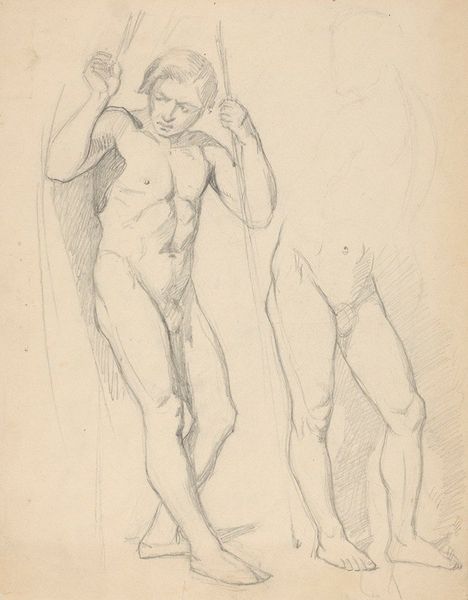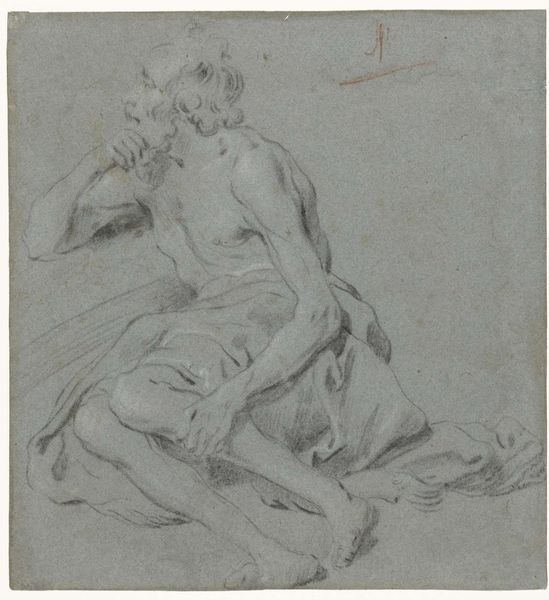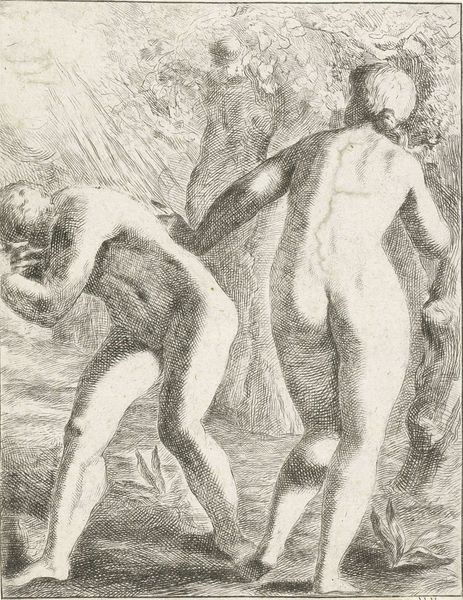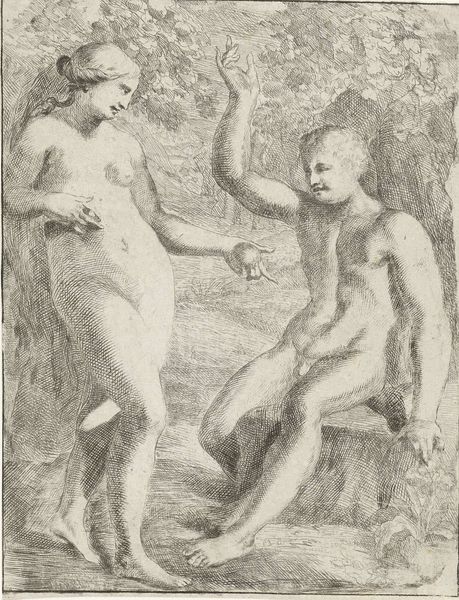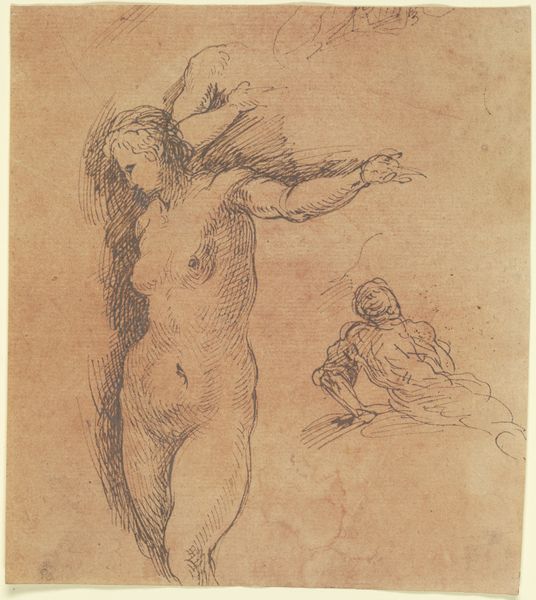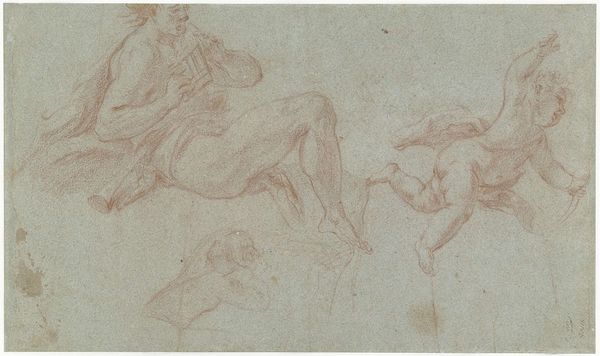
drawing, ink, pen
#
drawing
#
light pencil work
#
pen sketch
#
pencil sketch
#
figuration
#
11_renaissance
#
personal sketchbook
#
ink
#
ink drawing experimentation
#
pen-ink sketch
#
sketchbook drawing
#
pen
#
pencil work
#
nude
#
sketchbook art
#
fantasy sketch
Dimensions: height 160 mm, width 132 mm
Copyright: Rijks Museum: Open Domain
Curator: Let’s discuss this drawing housed here at the Rijksmuseum titled "Venus, Amor en een naakte figuur", attributed to Odoardo Fialetti, dating roughly from 1583 to 1638. Editor: My first thought is the raw power. The figure on the right, seen from the back, radiates an unexpected muscularity that defies the typical Venus. There is a directness, an almost confrontational aspect to it, given the pose. Curator: I see what you mean. That striking portrayal raises so many questions about representation. Consider the historical context. Were these figures seen as expressions of the female ideal during that time? What statement, if any, was Fialetti trying to make? Or was he just more invested in muscular bodies than we are led to expect in representations of Venus? Editor: The wings and quiver abandoned at her feet disrupt any easy assumptions we might make about Venus as the ruler of beauty and fertility. Look at Cupid, he's no cherubic baby; he's caught mid-action, swinging what seems to be a club with serious intent, his pose conveying force and intent, ready for something darker than what one would expect from love itself.. This aggression departs from the classical image, and the drawing invites interpretation from modern sociological and gender theory angles. What kind of comment about love's more destructive side might Fialetti be hinting at? Curator: The image speaks to our current explorations of the weaponization of emotion and to the potential violence inherent in interpersonal relationships. The artistic depictions of mythology become a site where the artists express ideas, or challenge preconceptions of gender roles. He really upends expectations, and that is why I find his sketchbook pages relevant today. Editor: Absolutely. By contrasting the traditional iconography of Venus with such blatant raw vigor, and placing Cupid into a state of violence Fialetti pushes us beyond simply admiring beauty toward questioning it. Even on paper the emotional impact lasts centuries later. Curator: It provides a fresh perspective, particularly for our visitors, in our current cultural dialogue regarding societal power structures and expectations. Editor: A potent reminder that the echoes of classical mythology in art, like the echoes of all symbolism in our culture, continuously push, pull, and reshape understanding over time.
Comments
No comments
Be the first to comment and join the conversation on the ultimate creative platform.
